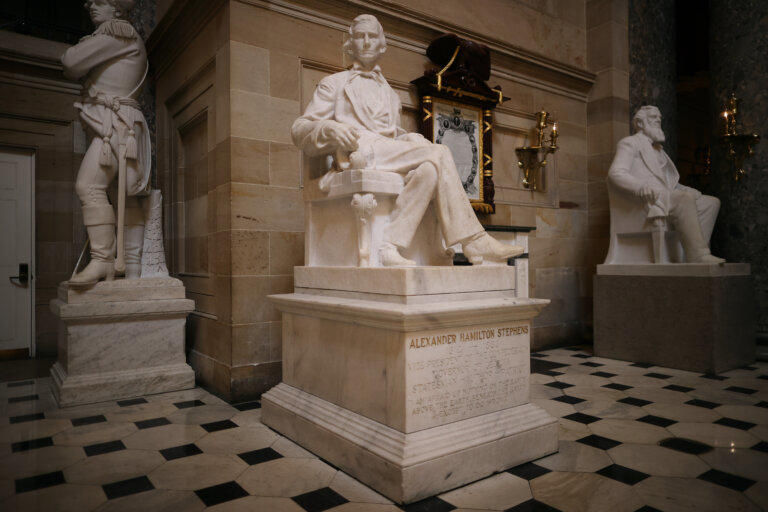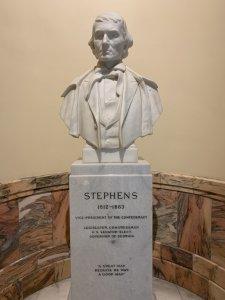
Caption
A statue of Alexander Stephens, Confederate vice president and former Georgia governor, could be evicted from its place of honor in the U.S. Capitol's Statuary Hall after a House vote Tuesday. Engraving on the pedestal describes him as a "patriot."
Credit: Georgia Recorder


